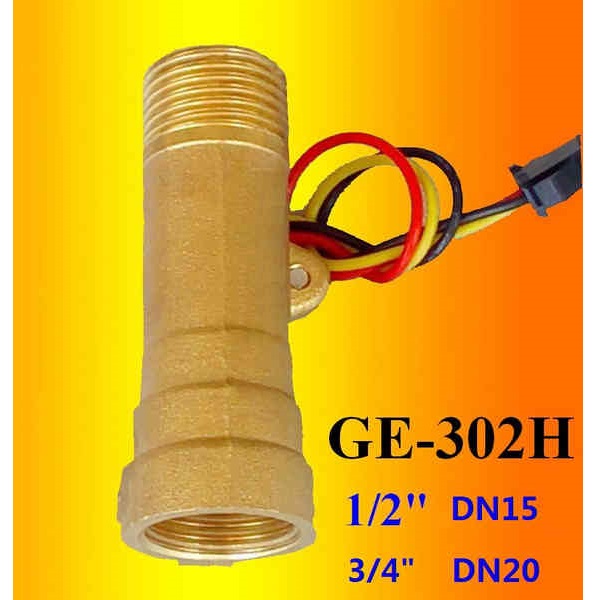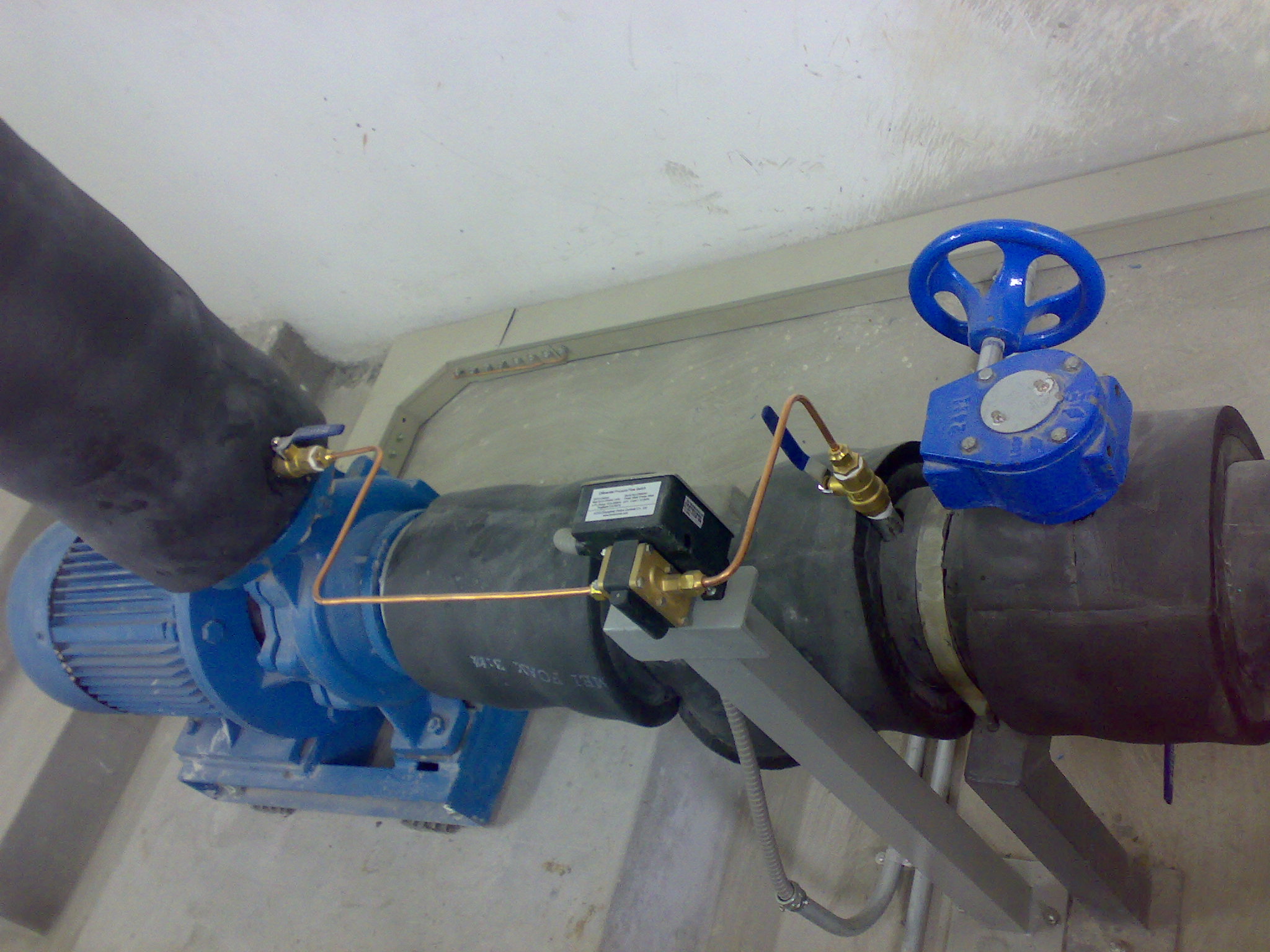Working Principle of Various Common Flow Switches
(the copy rights belongs to ZHOU ENSI LTD, reproduce is not allowed)
(I) Common Sensing Elements of water flow switch
1. Characteristics of magnetic spring switch, a kind of sensing element of water flow switch
Most water flow switches use magnetic reed switches as sensing elements, which were invented by wbellwood of bell Institute in 1936. In 1938, the magnetic spring switch was first used as the switch of coaxial transportation device. After that, with the development of automation technology, the magnetic spring switch also has a huge development. Magnetic spring switch has the advantages of rapid response speed, holding sealed contacts, small size and long mechanical life. It has made great contribution to the development of automation technology.
Various improvements have been made in improving the performance, miniaturization, manufacturing mode and reducing the production cost of the contact. Now the magnetic spring switch has been widely used as a sensor and control part in various fields such as automobile electrical installation, magnetic spring relay, various measuring instruments, etc. So water flow switch is no exception to the application of magnetic reed switch.

Paddle Flow Switches CM2K
CM2K Paddle Flow Switches is highly designed to monitor the flow rates...
The magnetic spring switch has the following characteristics.
(1) the contact is sealed in the glass tube together with inert gas, and will not be affected by the external atmosphere.
(2) the quality of the moving parts is very small, so the response speed is fast.
(3) the drive system and circuit are composed on the coaxial, which are suitable for the application products of high frequency transmission.
(4) small size, light weight.
(5) the contact has excellent corrosion resistance, wear resistance, long service life and stable switching action.
(6) combined with permanent magnet, proximity switch can be made easily and economically.
2. Characteristics of micro switch, a kind of the sensing element of water flow switch
Microswitch is a kind of fast switch driven by pressure, also known as sensitive switch, also known as contact switch.
Its working principle is: the external mechanical force acts on the action reed through the transmission elements (press pin, button, lever, roller, etc.), and accumulates the energy to the critical point, then produces the instantaneous action, which makes the moving contact and the fixed contact at the end of the action reed quickly connect or disconnect. When the force on the transmission element is removed, the action reed produces reverse action force. When the reverse stroke of the transmission element reaches the critical point of the reed action, the reverse action is completed instantaneously. The contact space of the microswitch is small, the action stroke is short, the press power is small and the on-off is fast. The action speed of the moving contact is independent of the action speed of the transmission element. The micro switch is of the basic type of push pin type, which can be derived from button short line program, button large line program, button super line program, roller button type, reed roller type, lever roller type, short boom type, long boom type, etc. Microswitch is used in electronic equipment and other equipment for the automatic control and safety protection of circuits which need to be changed frequently. Microswitch can be divided into large, medium and small. According to different needs, it can be divided into waterproof type (used in liquid environment) and ordinary type. The switch connects two lines to provide on-off control for electrical appliances and machines. It is widely used in industry, machinery, home appliances and other places. Although the switch is small, it plays an irreplaceable role.
3. Characteristics of Hall element, a kind of the sensing element of water flow switch
Hall effect is a kind of magnetoelectric effect, which was discovered by American physicist a.h.hall (1855-1938) in 1879 when he studied the conductive mechanism of metal. When the current passes through the conductor perpendicular to the external magnetic field, there will be potential difference between the two ends of the conductor perpendicular to the magnetic field and the current direction, which is the Hall effect. This potential difference is also called Hall potential difference.

GE-302H Brass Water Flow Sensor
1/2" Male + Female connection, produced by Brass material, stability a...
The principle of Hall effect: the electric charge in the conductor moves along the current direction under the action of electric field. Because there is a magnetic field perpendicular to the current direction, the electric charge is deflected by Lorentz force, and the direction of deflection is perpendicular to the current direction and the magnetic field direction, and the direction of positive and negative electric charges is opposite, so the electric potential difference is generated.
1. Working principle of rotor type water flow switch
The rotor type water flow switch, also known as the rotameter, can detect the water flow in the closed water pipe.
The rotor type water flow switch is composed of tapered pipe, magnetic rotor, stop and magnetic switch.
Different shapes of magnetic rotor and conical tube can be selected according to the size of water flow to be detected. When there is water flow through the pipe, the magnetic rotor is lifted by the impact force of the water flow. When the water flow reaches the detection flow, the magnetic rotor is pushed to the induction range of the magnetic switch, and the switch outputs the signal. When the water flow is less than the detection signal, the magnetic float will sink due to the effect of gravity, leaving the sensing range of the magnetic switch, and the switch will stop working. Since we want to start small flow and pass large flow, our pipe channel will be tapered.
2. Working principle of piston type water flow switch
The piston type water flow switch is composed of a housing, a magnetic piston, a magnetic switch and a spring.
When the water in the pipeline doesn’t move, the piston will sink at the bottom under the thrust of the spring. When the water flows through, the magnetic piston will be pushed to the spring end by the thrust of the water flow. When the flow reaches the flow set point, the magnetic piston will be pushed to the sensing range of the magnetic switch, and the magnetic switch will output a signal. When the water flow is less than the detection signal, the magnetic piston will be pushed by the spring thrust, leaving the magnetic switch, and the switch will stop Stop work.
3. Working principle of flap type water flow switch
Turnover plate water flow switch is composed of shell, turnover plate and proximity switch. When the water flow in the pipeline passes through the flap water flow switch, the impulse of the water flow lifts the flap in the switch, and the flap is close to the proximity switch, so the switch outputs the signal and starts to work.
4. Working principle of target Paddle water flow switch.
Target type water flow switch is a kind of water flow switch which is suitable for detecting water quality and impurities.
The target type water flow switch consists of a measuring tube, a target plate, a corrugated sealing diaphragm, a lever, a spring and a microswitch.
When the water flows through the pipe, the water flow will produce an impact force on the target paddle. Under the effect of this force, the lever angle is inclined, leaving the microswitch pressed under normal conditions, the switch will output a signal. When the water flow impact force is less than the spring force, the lever will be pushed back to the microswitch by the spring, and then it will stop working.
5. Working principle of differential pressure water flow switch.
Differential pressure water flow switch consists of differential pressure plate, diaphragm, push rod, venturi and return spring.
The operation principle is that the water flows in from the high-pressure chamber of the differential pressure plate and flows out through the venturi tube. A pressure hole is opened at the throat section of the venturi tube and connected with the low-pressure chamber of the differential pressure plate. The low pressure chamber is the pressure at the throat section of the venturi. The area of the throat section of Venturi tube is the smallest. When the water flow reaches a certain value, the thrust generated by the differential pressure between the high pressure chamber and the low pressure chamber increases and exceeds the force of the return spring. The separation diaphragm moves towards the low pressure chamber against the push rod and opens the microswitch. Then the system starts to work.
Once the flow stops. The pressure of the high-pressure chamber and the low-pressure chamber is balanced. The return spring pushes the separation diaphragm back to the high-pressure chamber side, and the microswitch resets. The system stops working.

GE-511A Differential Pressure Switches to detect the water flow of pump

